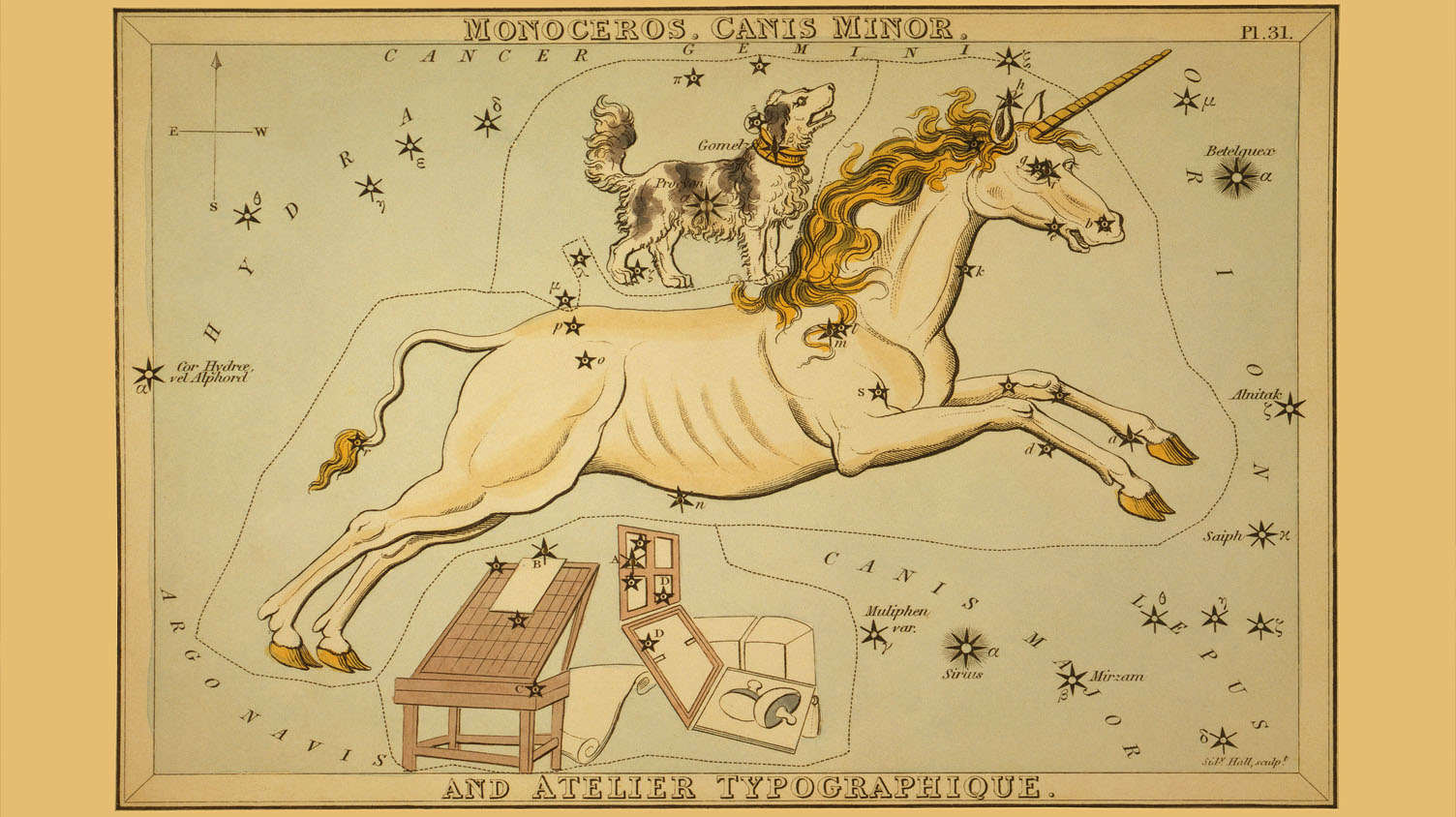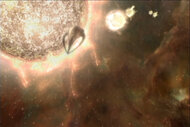Create a free profile to get unlimited access to exclusive videos, sweepstakes, and more!
What is now the closest known black hole to Earth is a real unicorn

Black holes can conjure visions of gaping mouths in the darkness, silently devouring everything from stardust to entire stars which venture too close, but not all of them are space leviathans.
There is one collapsed star that is more of a unicorn than a monster. “The Unicorn”, appropriately named since it lurks in the Monoceros (which literally translates to “one horn”) galaxy, is the newest of these objects discovered and now the closest known black hole to Earth—and one of the smallest ever. No one thought a black hole of this size could have been tugging at a dying red giant, but researcher Tharindu Jayasinghe had other ideas.
“There appears to be a theoretical maximum to the mass of a neutron star at up to 3 solar masses,” Jayasinghe, who recently led a study published in Astrobiology, told SYFY WIRE. “So the Unicorn is truly one of the smallest black holes possible. Finding these systems will help scientists understand the formation mechanisms of black holes and neutron stars.”
The Unicorn is a mass gap compact object some 1,500 light years from Earth. Rare and not well understood, these are cosmic objects that are by no means small to human eyes. The heaviest neutron star that has been found so far is 2.5 solar masses, while the Unicorn is among the smallest known black holes at 3 solar masses. The few that have been detected are all around 5 solar masses. Whether anything exists in that “mass gap” between the heaviest neutron star and the lightest black holes are what scientists were trying to find out, and the Unicorn fits in.
Spacecraft and telescopes are unable to detect black holes unless a star is being tidally distorted. If our tech is unknowingly not picking up enough information about what they observe, and the data beamed back suggests a black hole that might really be a neutron star or vice versa, there may be no mass gap at all. It could just be that there are either more heavy neutron stars or more (relatively) micro-black holes than we thought. However, it is most likely that the tidal disruptions experienced by the red giant star are coming from the gravitational pull of a black hole that is distorting it.
“We were able to study how the red giant's brightness varied over its orbit using the light curves from various telescopes,” Jayasinghe said. “The variability in these light curves depends on a few things, including the orbital inclination of the system, and the ratio between the mass of the red giant and the black hole. Light curves also inform us of the orbital period of this system.”
Stars that are tidally distorted fluctuate in brightness as they orbit, forming a type of system called an ellipsoidal variable. Black holes are hardly ever the companion stars in these systems. Using data about the red giant’s orbit, including how long it took to complete an orbit, how eccentric that orbit was, its distance from the black hole, was combined with the information Jayasinghe and his team already had about the light curves. This helped them figure out properties such as the masses of the star and black hole.
How the Unicorn formed remains a mystery. The most massive stars collapse in on themselves when they die, creating a black hole. Slightly smaller, but still enormous, stars go supernova and after they have exhausted all their hydrogen fuel, either morphing into black holes or neutron stars afterward. Exactly why a star either collapses or explodes is something that has also eluded scientists. If there are more small black holes like the Unicorn out there, it could help explain at least some reasons behind the deaths that stars die.
Jayasinghe believes there are more systems like this waiting to be found. Gaia could be capable of discovering 100 to 1,000 ellipsoidal variables similar to the Unicorn system, which are how many he and his team estimated could be hiding in the Milky Way.
“We are actively searching for similar systems by utilizing light curves from the All-Sky Automated Survey for SuperNovae (ASAS-SN) to identify ellipsoidal variables and datasets like APOGEE and LAMOST,” he said. “While this data is not enough to definitively confirm the presence of low-mass black holes, we are optimistic that we can find more systems like the Unicorn.”
For now, the Unicorn is an actual unicorn among black holes, but more of these elusive objects could almost magically appear in the future.















